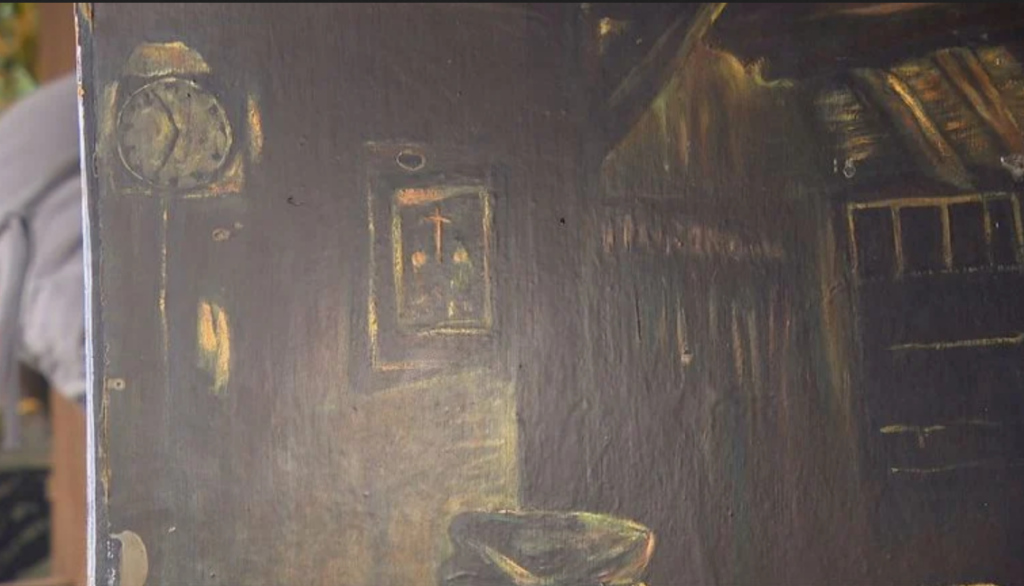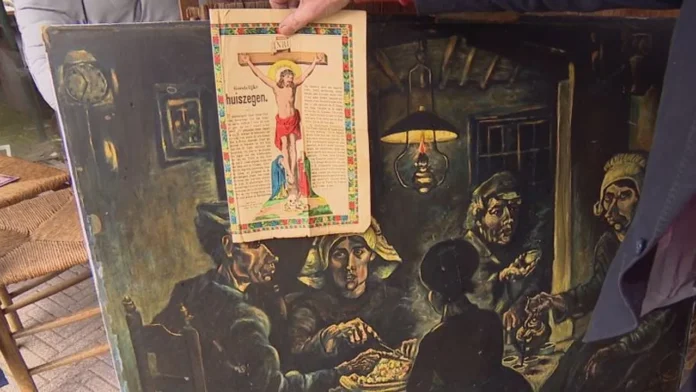Van Gogh fanatic Kees Rovers from Nuenen has made a major discovery in De Aardappeleters (the potato eaters). In the world-famous painting, a religious image, a house blessing, is mounted on the wall behind the kitchen table. It was never clear where this house blessing came from, but thanks to Kees it is now clear. After twenty years of searching, he found exactly the same religious print.
In Vincent van Gogh’s famous painting you see a house blessing hanging between the clock and the alcove bed. That is a religious picture that people used to hang at home to protect themselves. Rovers discovered, together with historian Gerard Rooijakkers, that the house blessing of ‘De Aardappeleters’ was previously brought from Kevelaer. This pilgrimage site is located in Germany, 57 kilometres from Nuenen. “No one knew this”, the 78-year-old Rovers says.
He found out thanks to some clever detective work. Rovers scoured Marktplaats (online commercial site) and auctions for twenty years, looking for a religious print exactly like the one of De Aardappeleters. “I wanted to complete the story”. Recently he got a hit. He found one on Marktplaats. To ensure that it was the same print as in the painting, Kees called in historian Rooijakkers. He made a report and confirmed his suspicion.
Pilgrimage
“We now know that one of the potato eaters went on a pilgrimage to Kevelaer and brought that house blessing with him from there. I am so happy”, Rovers proudly says. The historian is also satisfied. “It is special that we now know this”, Rooijakkers says. “The discovery of the house blessing is not unique in itself. Hundreds of thousands of these house blessings have been printed. But now we know that Van Gogh depicted one from Kevelaer”.

According to him, it is not surprising that this print hung on the wall of the De Groot farming family in Nuenen. Nuenen was a well-known departure point for pilgrimages to Kevelaer at the end of the nineteenth century. In 1885, when Van Gogh painted the painting, mothers and children walked to this German town. There they bought a so-called house blessing.
This print was blessed by a priest, so that people at home were protected against disasters such as flooding or the black plague. “During thunderstorms, the prayer that was written on the house blessing was prayed”, Rooijakkers explains. “Mother would pray at the table with the children. Father would walk around the house with a bowl of holy water and a palm branch”.
Enthusiastic
Rovers is happy that the whole story about the painting is now complete. He shared the information with the Van Gogh Museum in Amsterdam. “They were very enthusiastic”, he says.
And what will happen to his special house blessing? “It will never leave this village. It belongs in Nuenen”.
Source: Studio040
Translated by: Bob











